
What Does Red Mean in a Dream?
Red, the color of blood and fire, is perhaps the most primal and visceral of all the hues on the spectrum. Associated with intense emotions, vital life force, and the very essence of human survival and power, red evokes a raw, instinctual response that cuts straight to the core of our being.
In this comprehensive exploration, we will dive deep into the multifaceted nature of red, examining its profound impact on our physiology, psychology, and behavior. We will investigate the latest scientific research on how exposure to red light influences brain function, hormonal activity, and physical performance, as well as the complex cultural and archetypal meanings of this powerful color.
From the crimson of passion and the scarlet of aggression to the burgundy of royalty and the ruby of the alchemical opus, we will trace the many shades of red as they appear in art, literature, religion, and mythology, uncovering the timeless truths and transformative lessons that this primal hue has to offer.
Whether you are a therapist seeking to harness the power of color in your work with clients, an artist exploring the expressive potential of the red palette, or an individual on a path of self-discovery and personal growth, this in-depth guide will provide a wealth of insights, inspiration, and practical guidance for embracing the primal energy of red and integrating its transformative power into your life.
The Meaning of Red in Dreams
When red appears in dreams, it often signifies intensity, urgency, or a need to pay attention to something critical in the dreamer’s waking life. It can symbolize strong emotions—ranging from love and passion to anger and aggression—depending on the context. Given red’s somatic associations, its presence in dreams may also indicate physiological activation, unresolved trauma, or a heightened state of alertness carried over from waking life.
A dream featuring bright, vibrant red may reflect vitality, power, or a call to action. It can represent the dreamer’s life force, creativity, or the need to engage more fully with their desires. However, if the red appears in a chaotic or distressing context, it may signal emotional overwhelm, unresolved anger, or even the presence of trauma-driven hypervigilance.
Far-red tones, which are associated with hyperarousal and survival instincts, might appear in dreams when the dreamer is processing deep-seated fears or confronting a life-defining challenge. Such dreams could indicate that the unconscious is working through states of stress or an unintegrated fight-or-flight response. In Jungian terms, red might also connect to the anima or animus, particularly in its more passionate, volatile, or instinctual manifestations.
The meaning of red in dreams is often shaped by personal associations, cultural influences, and the emotional tone of the dream itself. It serves as an invitation to explore the body’s responses, emotional landscape, and deeper instincts in waking life.
Somatic Associations with Red
Red is one of the most viscerally charged colors in the spectrum, often linked to primal instincts and the body’s autonomic responses. Physiologically, red is known to increase heart rate, stimulate circulation, and activate the sympathetic nervous system, which governs the body’s fight-or-flight response. This heightened arousal can manifest as a surge of energy, increased alertness, or, in some cases, a sense of restlessness or agitation.
In somatic terms, red is frequently associated with life force and vitality. It aligns with the body’s survival instincts, encompassing both the drive to live and the physiological effects of hyperarousal. This connection is evident in the way red can evoke both passion and urgency—whether in the form of desire, aggression, or the need to act. Trauma researchers, particularly those studying somatic therapies like Peter Levine’s Somatic Experiencing, recognize red as an indicator of a body that is still holding onto activation from past stress or threat. In cases of trauma, an overactive sympathetic response—marked by increased blood flow and muscular tension—may correlate with an inability to fully discharge stored energy, keeping the nervous system in a heightened state.
Far-red, a deeper variation of red, has been associated with the life instinct, a strong desire to persist, and heightened arousal states. This connection suggests that red may amplify the body’s readiness for action, whether in the context of survival, excitement, or stress. It is also linked to the first chakra in many energetic healing systems, reinforcing its ties to grounding, security, and raw life force.
The Neuroscience of Red Light
To fully understand the psychology of red, it is essential to first explore how this color influences the human body and brain at a biological level. Recent advances in neuroscience, psychophysiology, and color psychology have shed new light on the complex ways in which exposure to red wavelengths can modulate our physiological and cognitive functions.
Arousal of the Autonomic Nervous System
One of the most well-established effects of red light is its impact on the autonomic nervous system (ANS), which regulates involuntary bodily functions such as heart rate, blood pressure, digestion, and sexual arousal. Numerous studies have shown that exposure to red light increases sympathetic nervous system activity, the branch of the ANS responsible for the “fight or flight” response (Elliot & Maier, 2014).
This heightened physiological arousal is mediated by the release of hormones such as adrenaline and noradrenaline, which prepare the body for action by increasing heart rate, blood flow to the muscles, and glucose metabolism (Kirschbaum et al., 1993). The arousing effects of red light have been demonstrated in a variety of contexts, from sports performance to sexual attraction (Hill & Barton, 2005; Elliot & Niesta, 2008).
Stimulation of the Hypothalamus and Hormonal Regulation
In addition to its effects on the ANS, red light has been shown to directly stimulate the hypothalamus, a region of the brain that plays a central role in regulating hormonal activity and homeostasis (Vandewalle et al., 2010). The hypothalamus contains specialized photoreceptors that are particularly sensitive to red wavelengths, and exposure to red light has been found to modulate the secretion of various hormones, including cortisol, testosterone, and estrogen (Figueiro & Rea, 2010).
These hormonal changes can have significant effects on mood, behavior, and cognitive function. For example, increased levels of testosterone in response to red light have been linked to improved spatial ability, risk-taking behavior, and social dominance (Elliot et al., 2010). Similarly, changes in cortisol secretion can influence stress responses, emotional regulation, and memory formation (Cajochen et al., 2005).
Activation of the Basal Ganglia and Behavioral Motivation
At a higher level of brain function, red light has been found to activate the basal ganglia, a group of subcortical structures involved in motor control, reward processing, and motivated behavior (Hu et al., 2013). The basal ganglia play a key role in the brain’s dopamine system, which is associated with pleasure, reinforcement learning, and the pursuit of goals (Schultz, 2007).
Studies using functional magnetic resonance imaging (fMRI) and qEEG have shown that exposure to red light increases activity in the basal ganglia, particularly in the ventral striatum and nucleus accumbens, which are critical for the experience of reward and the motivation to approach desired stimuli (Hu et al., 2013). This suggests that red light may enhance the salience and attractiveness of certain objects or experiences, driving individuals to pursue them with greater intensity and persistence.
The activation of the basal ganglia by red light may also have implications for the development and expression of addictive behaviors, as the dopamine system is heavily implicated in the reinforcing effects of drugs, alcohol, and other rewarding stimuli (Berridge & Robinson, 1998). Understanding the influence of red light on these brain circuits may inform the treatment and prevention of addiction and other motivated behaviors.
The Symbolism and Archetypes of Red
Beyond its physiological effects, red carries a rich tapestry of cultural, historical, and archetypal meanings that have shaped human experience and imagination for millennia. From the ochre pigments used in ancient cave paintings to the crimson robes of Catholic cardinals, red has been imbued with a diverse array of symbolic associations, reflecting the complexity and multivalence of this primal color.
Blood, Sacrifice, and the Life Force
One of the most universal and enduring meanings of red is its connection to blood, the vital fluid that sustains life and carries the essence of the soul. In many cultures, red is seen as the color of the life force itself, the animating principle that flows through the veins of all living beings (Chevalier & Gheerbrant, 1969).
This association with blood gives red a sacred and sacrificial quality, as the shedding of blood is often seen as a necessary offering to the gods or a means of purification and transformation. In ancient Mesoamerican cultures, the blood of sacrificial victims was believed to nourish the sun and ensure the continuation of the cosmic cycle (Girard, 1977). In Christianity, the blood of Christ is the ultimate sacrifice that redeems humanity and grants eternal life (Strack, 2005).
The archetypal figure of the wounded healer, exemplified by shamans, saints, and martyrs, is often associated with the color red, as the shedding of one’s own blood is seen as a powerful catalyst for spiritual transformation and the healing of others (Groesbeck, 1975). By embracing the sacrificial and regenerative power of red, individuals may find the courage and resilience to face their own wounds and traumas, and to use their suffering as a source of compassion and service to the world.
Passion, Sexuality, and the Erotic Impulse
Another prominent symbolic meaning of red is its association with passion, desire, and the erotic impulse. Red is the color of sexual attraction and arousal, the flush of the cheeks and the swelling of the genitals in the heat of desire (Elliot & Niesta, 2008). In many cultures, red is used to signify fertility, seduction, and the mysteries of human sexuality (Hutchings, 2004).
The archetypal figure of the lover, embodied in mythic characters such as Aphrodite, Eros, and Valentine, is often depicted in shades of red, highlighting the intensity and urgency of erotic love (Powell, 2015). Red is also associated with the creative and destructive power of sexual energy, the primal force that drives the cycle of life and death, creation and destruction (Neumann, 1954).
By embracing the passionate and erotic qualities of red, individuals may tap into a deep source of vitality, inspiration, and connection, and learn to channel their sexual energy in a way that is life-affirming, transformative, and respectful of self and other. The red of passion invites us to celebrate the sensual pleasures of the body, while also recognizing the sacredness and vulnerability of the human heart.
Aggression, Dominance, and the Will to Power
A third major symbolic association of red is its link to aggression, dominance, and the will to power. In nature, red is often used as a warning signal or a display of threat, as in the red coloration of poisonous berries or the flushed face of an angry primate (Dunbar, 1984). In human societies, red has long been associated with war, violence, and the assertion of social dominance (Cuthill et al., 1997).
The archetypal figure of the warrior, exemplified by Mars, the god of war, or the fierce deities of various pantheons, is often depicted in red, symbolizing the courage, strength, and skill needed to overcome enemies and obstacles (Eliade, 1959). Red is also associated with the will to power, the drive to assert oneself and to dominate others, as reflected in the red robes of kings, cardinals, and other figures of authority (Greenfield, 2005).
While the aggressive and dominating aspects of red can be destructive and oppressive when misused, they can also be harnessed for positive purposes, such as standing up for one’s beliefs, protecting the vulnerable, or fighting against injustice. By embracing the warrior energy of red in a balanced and ethical way, individuals may develop greater courage, integrity, and resilience in the face of adversity.
Therapeutic and Transformative Applications of Red
Given its profound effects on physiology, psychology, and symbolism, red can be a powerful tool for personal growth, healing, and transformation. By consciously working with the energy and meaning of red, individuals and therapists can harness its potential for catalyzing positive change and achieving greater vitality, passion, and purpose in life.
Embodiment and Physical Vitality
One of the primary therapeutic applications of red is its ability to promote embodiment, physical vitality, and the healthy expression of primal energies. By surrounding oneself with red light, wearing red clothing, or visualizing red in meditation, individuals can stimulate the autonomic nervous system, increase circulation and oxygenation, and tap into a greater sense of aliveness and presence (Figueiro & Rea, 2010).
This can be particularly useful for individuals who struggle with chronic fatigue, dissociation, or a disconnect from their bodily sensations and needs. By embracing the vitalizing power of red, they may learn to inhabit their bodies more fully, to assert their physical boundaries and desires, and to experience a greater sense of joy, sensuality, and connection to the natural world.
Emotional Catharsis and the Release of Repressed Feelings
Another therapeutic use of red is its capacity to facilitate emotional catharsis and the release of repressed or blocked feelings, particularly those related to anger, grief, and trauma. The intense, activating quality of red can help individuals to access and express difficult emotions that may have been buried or denied, allowing for a greater sense of authenticity, self-acceptance, and emotional fluidity (Withrow, 2004).
This process of emotional catharsis can be supported through various therapeutic modalities, such as art therapy, psychodrama, or body-centered approaches like bioenergetics or somatic experiencing. By creating a safe and supportive space for the exploration of red-tinged emotions, therapists can help individuals to integrate and transform their shadow aspects, and to develop greater emotional resilience and adaptability.
Sexual Healing and the Cultivation of Erotic Intelligence
The passionate and erotic qualities of red also make it a valuable tool for sexual healing and the cultivation of a more embodied, conscious sexuality. By working with the energy of red in a therapeutic context, individuals can explore and transform sexual wounds, shame, and inhibitions, and learn to embrace their erotic nature as a source of creativity, vitality, and connection (Anand, 1989).
This may involve practices such as tantric meditation, sacred sexuality workshops, or sex therapy approaches that emphasize the integration of mind, body, and spirit in sexual experience. By cultivating an erotic intelligence that is rooted in the wisdom and sensitivity of the body, individuals can tap into a deep well of pleasure, intimacy, and transformative power in their sexual lives.
Assertiveness Training and the Development of Healthy Boundaries
Finally, the archetypal energy of the red warrior can be harnessed for assertiveness training and the development of healthy boundaries. Many individuals struggle with expressing their needs and desires, setting limits, and standing up for themselves in personal and professional contexts. By connecting with the courage and strength of red, they may find it easier to assert themselves in a clear, confident, and compassionate way (Alberti & Emmons, 2017).
Therapeutic approaches that incorporate role-playing, improvisation, or martial arts principles can be particularly effective in this regard, as they provide a safe and structured space for experimenting with new ways of being and relating. By learning to channel the warrior energy of red in a constructive and ethical manner, individuals can develop greater self-respect, interpersonal effectiveness, and the ability to create meaningful change in their lives and in the world.
The psychology of red is a rich and complex topic that encompasses a wide range of physiological, emotional, and symbolic dimensions. From its impact on the autonomic nervous system and hormonal regulation to its archetypal associations with blood, passion, and power, red emerges as a primal and transformative force in the human psyche.
By understanding the science and symbolism of red, and by consciously working with its energy and meaning in therapeutic and personal growth contexts, individuals can tap into a deeper sense of vitality, authenticity, and purpose. Whether through the embodiment of physical presence, the catharsis of repressed emotions, the cultivation of erotic intelligence, or the development of assertiveness and healthy boundaries, the power of red can be harnessed for profound healing and transformation.
As we continue to explore the spectrum of color in its psychological and archetypal dimensions, let us keep in mind the lessons and gifts of red: the courage to face our shadows and traumas, the passion to embrace our desires and creativity, the strength to assert our boundaries and fulfill our destinies. May we all find the wisdom and resilience to integrate the primal, living essence of red into our lives, and to radiate its transformative power in service of a more vital, authentic, and compassionate world.
Color Psychology
Psychology of Red-Orange
Psychology of Orange
Key Takeaways
- Red light stimulates the autonomic nervous system, increasing arousal, heart rate, and blood flow.
- Red activates the hypothalamus and modulates hormonal secretion, influencing stress responses, emotional regulation, and sexual function.
- The basal ganglia, involved in motivation and reward, are activated by red light, potentially enhancing goal-seeking behavior.
- Red is symbolically associated with blood, sacrifice, and the life force, reflecting its sacred and transformative power.
- Red represents passion, sexuality, and the erotic impulse, inviting a celebration of sensual pleasure and creative energy.
- Red is linked to aggression, dominance, and the will to power, which can be channeled for self-assertion and the protection of others.
- Therapeutic applications of red include promoting embodiment and vitality, facilitating emotional catharsis, supporting sexual healing, and developing assertiveness and healthy boundaries.





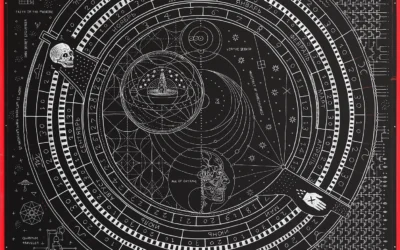

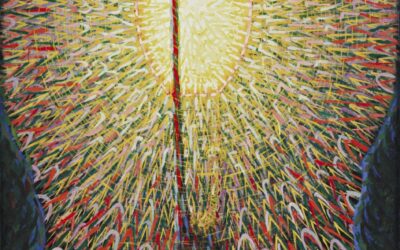

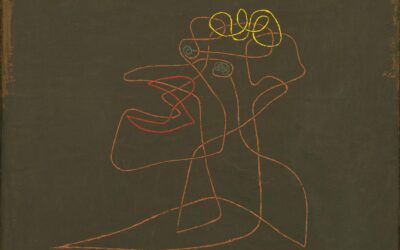
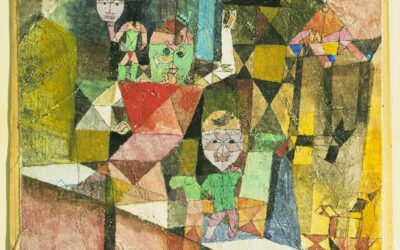

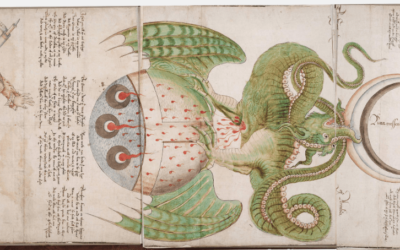









0 Comments